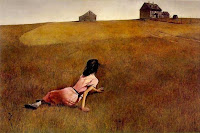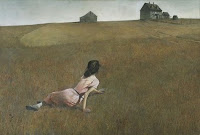
Color is all around us. We notice it from a young age when we are 'coloring' with our box of Crayolas. We play with colorful toys like a bright yellow pail and shovel, a little red wagon and a bright green 'First Computer'.
As we get older, we make color choices for the places we live and work, the cars we drive and the clothes we wear. There are companies which make a good business of color - Pantone, Benjamin Moore, and every Paris fashion designer.
Why do we care? Because colors have meaning.
In our business, we believe since color is important to our brides, it is important to portray color correctly throughout a scene. Accurate color is one of the 6 basic criteria of evaluating videography. [See s
idebar Videography Criteria to the lower right of this post.] We are one of the few wedding cinematographers in the country who do extensive color work in post-production includi
ng adjusting the colors, luminance/brightness, and contrast to match the shots from our multiple cameras.
First, before we shoot a single frame, we calibrate each of our cameras to produce true and accurate color, and to match each other perfectly. Then, we fine-tune the color balance on our cameras at the event to further ensure a perfect match among cameras.
Lighting and color can vary wildly from a bride's preparation filmed under yellow incandescent lights, to a ceremony shot in (blue) shade outdoors, and a rece
ption filmed in a (red) wine cave. In post-production, we make adjustments to ensure it is not too jarring to go from one scene to the next. It's relatively easy to make these adjustments on a single photograph
with Photoshop. But when you're operating on each clip (clip=a series of frames that encapsulate a single scene or action) of a 30 to 40 minute movie, it's not a trivial task.
There are about 1200 clips in one of our wedding movies. Sometimes one clip requires several color and exposure adjustments as a bride and groom walk down the aisle from the candle lit interior of a cathedral out the doors into bril
liant sunlight. It is more art than science, so a lot of practice and a lot of patience is required.
We color correct because we have very little control over lighting at a wedding. And yet, we want skin tones to look flattering and the scene to be pleasing to the eye. So, we film as well as circumstances allow, then color correct in post-production. Here is a scene which is too blue.
Now, here is the same scene with color enhancement to make the scene warmer. It's more pleasing to our eyes because this is what we are accustomed to seeing. Even when the scene really is too blue, our brains correct what our eyes see.
These days, there are so many different televisions each with multiple color adjustments. When we deliver our movies, how can we be certain the true colors will be seen? We use a calibrated color monitor. That means we can be 100% certain that the colors in the movie are accurate. And these days, we like to deliver the movie and see for ourselves how it looks on the screen. Frequently our clients thank us for making recommendations for tuning up the TV's color not just so they can see their wedding movie in real color, but so they can view broadcast TV shows and Blockbuster videos in accurate color too.
Once you've mastered accurate color, what's the next frontier? In Hollywood, digital colorists are giving movies a certain look through the process of 'color grading'. In Color, Part II, we'll explore color grading.


















